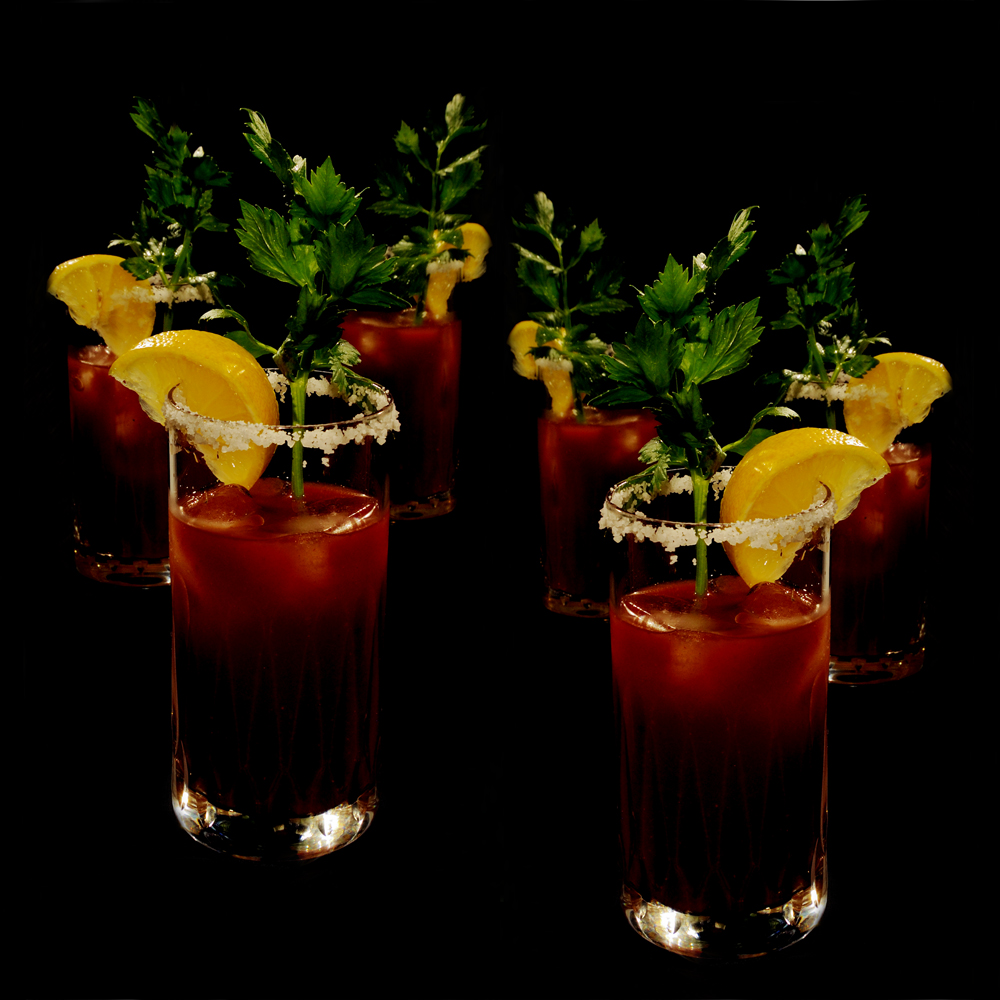
January 1st, heralding the dawn of a new year, also brings us World Bloody Mary Day.
The Bloody Mary has long held a reputation as the ultimate hangover remedy, making it a fitting choice for the morning after the New Year’s Eve revelry. In America, it’s often a brunchtime favorite, the ideal companion for late mornings spent recovering from the previous night’s festivities.
This iconic cocktail made its debut on the bar scene during the Roaring Twenties, and, as is often the case with beloved concoctions, several individuals lay claim to its invention.
The leading contender for the title of creator is the comedian George Jessel. In his autobiography, Jessel asserted that he crafted this elixir in 1927 while in Palm Beach, seeking a remedy for his hangover. After an all-night celebration to honor a softball tournament victory, he found himself nursing a throbbing headache and facing another commitment just hours away. In a moment of desperation, Jessel, perched at La Maze’s bar, accepted the bartender Charles’s suggestion to sample a dusty bottle of an unfamiliar liquid (vodka, which was not yet widely known in America at the time). To mask the potent smell, Jessel asked for tomato juice and added lemon juice and Tabasco. To his amazement, the concoction worked wonders in alleviating his ailment. The cocktail swiftly earned a place on La Maze’s menu, and vodka found its rightful role in the mix.
Another contender is the French bartender Fernand Petiot. He lays claim to two controversial assertions. First, he purports to have created this libation long before Jessel, back in 1921 while working at a New York bar in Paris. Regrettably, this assertion lacks corroborating evidence. However, his second claim carries more weight. After migrating from Europe to New York, Petiot began working at the King Cole Room in the St. Regis Hotel. In 1934, he embarked on a mission to elevate Jessel’s vodka and tomato juice concoction, adding salt, black and cayenne peppers, lemon juice, and Worcestershire sauce. This transformation imbued the cocktail with its modern and distinctive flavor profile, solidifying its place in cocktail history.
The composition of this cocktail is incredibly versatile, shaped by the discerning tastes of bartenders and consumers alike.
The classic International Bartenders Association (IBA) recipe includes essential ingredients such as lemon juice, Worcestershire sauce, Tabasco, black pepper, and celery salt.
Yet, the beauty of the Bloody Mary lies in its adaptability—individuals can tailor it to their unique preferences. The crucial factor is to employ high-quality ingredients, particularly vodka and tomato juice. Neither element masks the flavor of the other, so it’s essential to select components that you genuinely enjoy on their own merits.
The garnishes offer yet another realm for creative experimentation. Since the 1950s, a celery stalk has been the quintessential Bloody Mary accompaniment. According to the classic IBA recipe, the garnish typically consists of a celery stalk and a lemon wedge. However, you’ll often encounter variations with pickles, olives, cheese cubes, bacon, sausages, shrimp, and more. The possibilities are limited only by one’s imagination and pantry supplies. Sometimes, you might even find yourself enjoying a complete meal alongside your cocktail—an incredibly convenient perk.
The choice of serving with or without ice is entirely at your discretion. Should you opt for ice, consider using large, high-quality cubes that melt gradually, preserving the drink’s integrity and flavor.
In Russia and Poland, the two-layered Bloody Mary is a common sight, with vodka gracefully floating atop the tomato juice.
The origins of the cocktail’s name remain shrouded in mystery, with no definitive explanation. Many attribute it to its striking resemblance to the color of blood.
One widely circulated theory attributes the name to Queen Mary I of England, known as “Bloody Mary” due to her efforts to restore Catholicism in England. This nomenclature is often attributed to Fernand Petiot. Another tale suggests that it was named after a waitress named Mary at the Bucket of Blood bar. Jessel, on the other hand, claimed he christened the cocktail in honor of Mary Warburton, who was present at its inception and accidentally spilled some on her pristine white evening dress.
A different hypothesis posits that no Mary was involved, and “Bloody Mary” evolved as an attempt to phonetically pronounce “Vladimir.” This ties back to Vladimir, meaning Smirnoff, a member of the Smirnoff Vodka family.
Throughout its storied history, the Bloody Mary has spawned a multitude of variations, each offering a unique twist on this beloved classic.
Asian Mary – with wasabi, ginger, and soy souse
Bloody Bull – with beef bouillon
Bull Shot – in this case, beef bouillon completely replaces tomato juice
Bloody Caesar – with Clamato Juice (tomato juice with clam’s bouillon) – the Canadian answer to Bloody Mary.
Bloody Joseph – with Scotch whiskey
Bloody Maria – with Tequila
Bloody Maru – with Sake
Cubanita – with rum
Red Snapper – with gin
And also
Bloody Shame aka Virgin Maria –without alcohol.
Of course, this is not a complete list.
As we embrace the first day of the new year, the Bloody Mary serves as a canvas for your personal taste and creativity, inviting you to craft your own unique version of this timeless libation.
And classic IBA recipe.
Ingredients:
-1 1/2 oz/45 ml Vodka
-3 oz/90 ml Tomato Juice
-1/2 oz/15 ml Fresh Lemon Juice
-2-3 dashes of Worcestershire Sauce
-Tabasco, Celery Salt, Black Pepper up to taste
Process:
Stir gently all the ingredients in a mixing glass with ice, and pour into the glass.
Garnish – Celery stalk and Lemon wedge.
Drinkware:
Rock glass or Highball glass if served with ice.
Perfect New Year for everyone!
Visit my online store for a unique poster featuring this cocktail, along with many other beautiful cocktails and other wine-related subjects.
It’s the perfect way to add a touch of sophistication to your kitchen or bar. Click here to shop now!